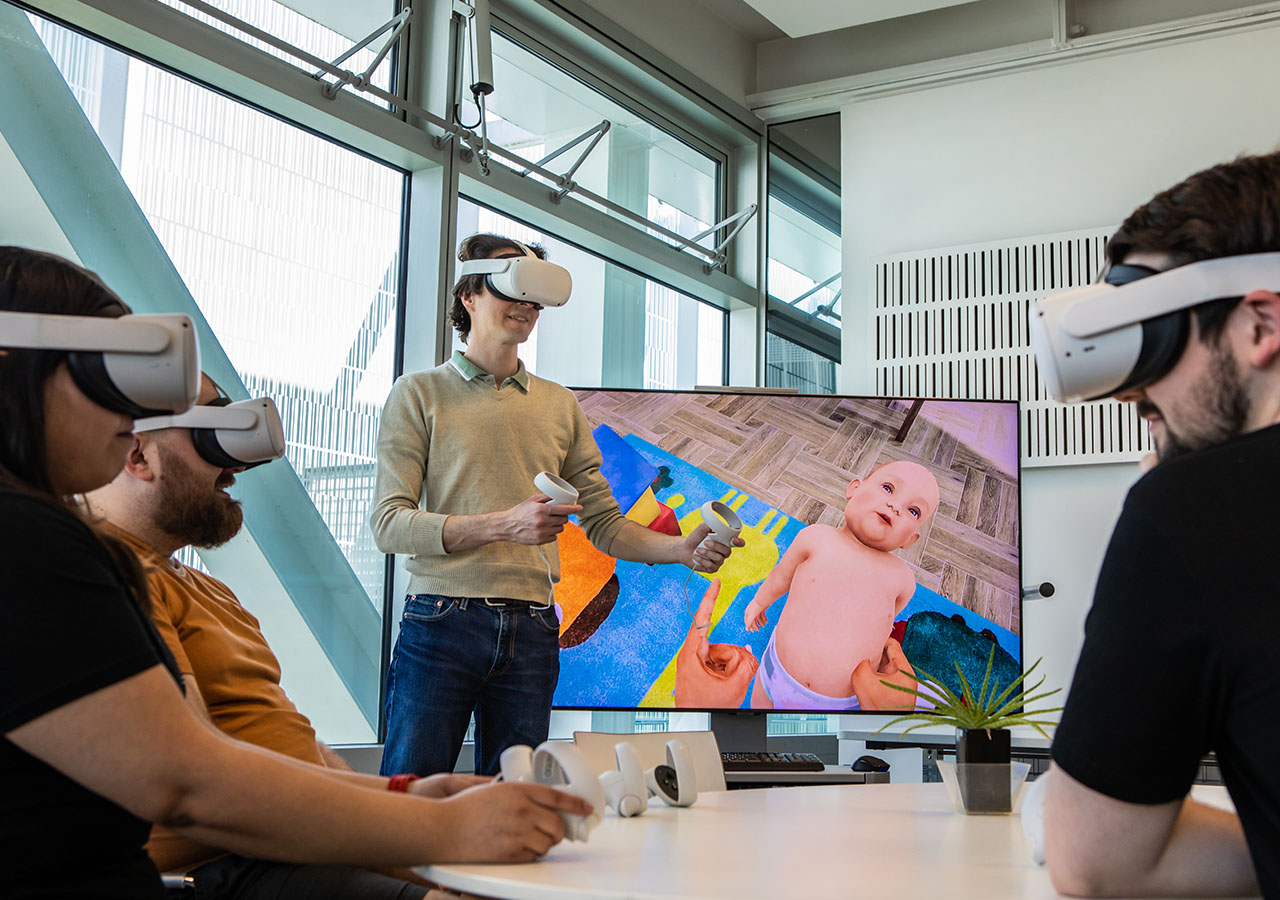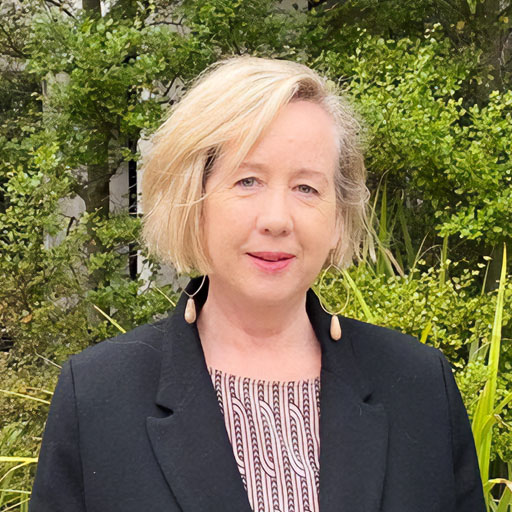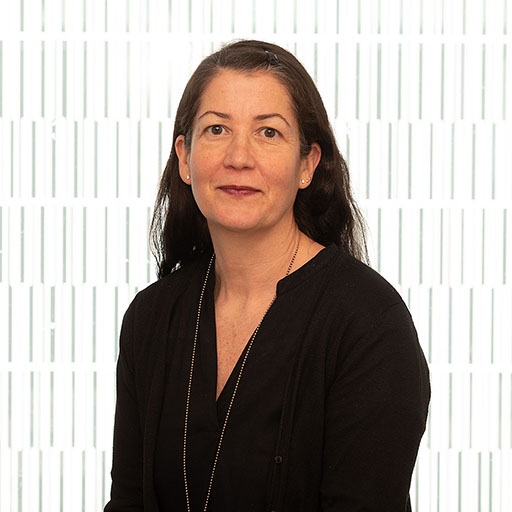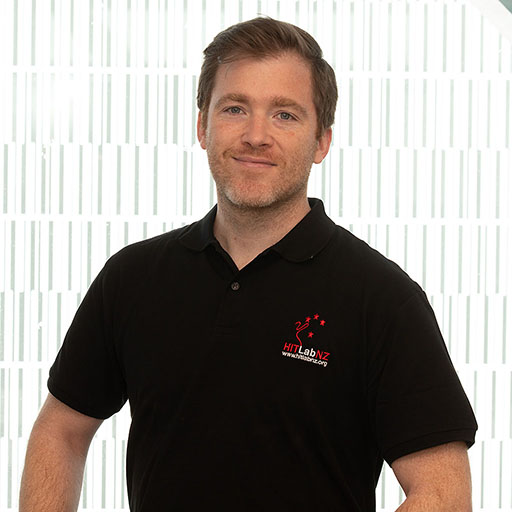VR Baby Training Tool (VRBTT)
2022 – ongoing

The VR Baby Training Tool (VRBTT) allows students to interact with a simulated baby in a safe environment and become confident in edu-caregiving skills in early childhood settings. The aim is to support infant teachers to be relationally present with a virtual baby in a simulated ECE environment.
Associate Professor Heide Lukosch and developers, Ryan McKee and Shunsuke Fukuden from HIT Lab NZ worked with colleagues from UC’s Child Well-being Research Institute (CWRI) and School of Health Sciences, to develop a prototype virtual reality baby that gives students a safe, simulated experience to prepare for real-life encounters.
The project team, led by Professor Jayne White, then ran a proof-of-concept trial with a small group of students. Users took turns wearing the VR headset with the virtual baby and also provided commentary on the strategies of their peers by watching them in the game on a shared screen. The results were encouraging.
“I was amazed at how quickly the virtual baby became ‘real’ to the users. They responded wholeheartedly. We observed high levels of reflection, self-awareness, as well as increased confidence in articulating and demonstrating the intentional nature of their relational pedagogical work,” says Professor White. “Students knew they could safely experiment with different approaches.”
The infant is programmed to react to user cues such as being picked up, being near objects it likes or dislikes, or not being responded to appropriately. The virtual baby even becomes tired just like a real infant. A feature of the prototype is that it allows for sensing encounters through vibrations upon touch. “The virtual baby is so realistic some users got quite upset if they mishandled the baby, even though they knew it wasn’t real” Jayne explains.
This study shows how the VRBTT improves the confidence of students enrolled in child-related fields and will feed into a pilot study and prototype redesign for broad interdisciplinary use.
Professor White has already been approached by other disciplines and organisations to adapt the virtual baby for their purposes. Based on what has been learnt, the team plan to increase the sophistication of the simulation and develop the repertoire of teaching experiences across different scenarios. “We’re keen to enable users to feel things like temperature and weight. We also plan to add voice activation so the virtual baby can respond to verbal stimuli too.”
However, that comes with challenges. “Every single movement and every single interaction has to be carefully programmed so it’s quite a complex process and that is going to take some time, which in turn comes with costs, but the potential is huge.”
Read more about this project and others in the Child Well-being Research Institute (CWRI) 2022 Year in Review. – Nurturing Research Excellence to Support Children’s Holistic Well-Being: Year in Review
People

Professor Jayne White
Child Well-being Research Institute

Associate Professor Heide Lukosch
HIT Lab NZ

Dr. Cara Swit
School of Health Sciences

Ryan McKee
HIT Lab NZ

Shunsuke Fukuden
HIT Lab NZ
